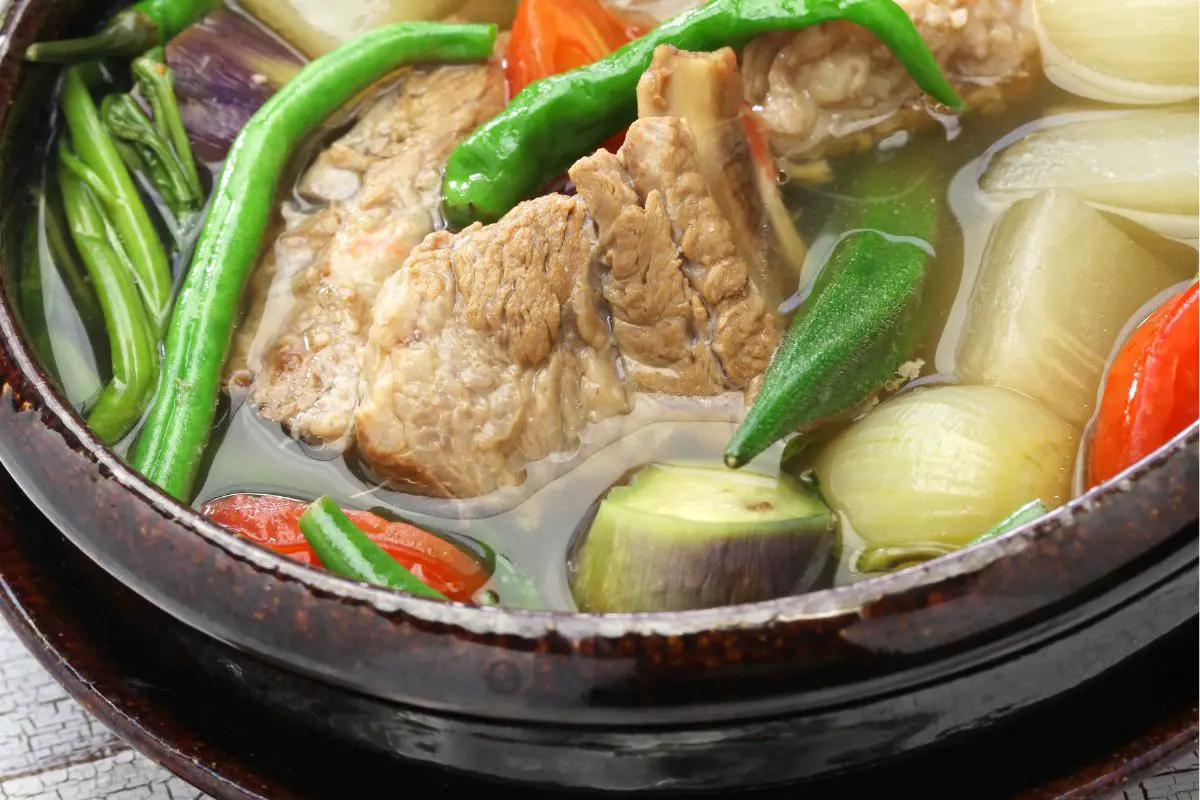Flavorful Filipino Food Recipes for the Ultimate Feast.
Authentic Filipino Food Recipes to Attempt in the house
Discovering genuine Filipino food dishes presents a chance to appreciate the intricate tastes and social value behind each meal. Making use of fresh, local ingredients is crucial, as is accepting communal eating-- a hallmark of Filipino society.
Popular Filipino Dishes
Filipino food flaunts a rich tapestry of flavors and practices, with over a loads iconic dishes that highlight the nation's diverse cultural impacts. Among the most well-known recipes is Adobo, a mouthwatering stew typically made with chicken or pork, marinaded in vinegar, soy sauce, garlic, and seasonings. Its zesty flavor profile makes it a staple in Filipino families.
One more cherished recipe is Sinigang, a sour soup typically made with tamarind, tomatoes, and numerous veggies. This dish can feature pork, shrimp, or fish, and its rejuvenating taste is best for cozy climates. For those with a pleasant tooth, Leche Flan-- a luscious sugar custard-- serves as a prominent dessert, showcasing the Filipino propensity for abundant, sweet flavors.
Kare-Kare, a hearty oxtail stew with a thick peanut sauce, in addition to the famous lumpia, or spring rolls, further exemplify the selection discovered in Filipino cuisine. Each dish not just offers special tastes yet likewise tells a tale of regional ingredients and historic impacts, making Filipino food a vibrant reflection of its society and heritage.
Crucial Ingredients for Filipino Cooking
The significance of Filipino cooking lies in its necessary components, which function as the foundation for the country's precious dishes. A range of flavors and textures collaborated, showcasing the varied social impacts that form Filipino cuisine.
Secret components consist of rice, the staple that goes along with virtually every meal, symbolizing sustenance and neighborhood. Soy sauce, vinegar, and fish sauce (patis) are important for flavoring, conveying umami and depth to recipes. Fresh natural herbs like cilantro and basil include aromatic freshness, while garlic, onion, and ginger supply a robust flavor base.
Protein sources such as pork, chicken, and seafood are central to several dishes, often seasoned to enhance preference. Veggies like eggplant, bitter melon, and green beans add crucial nutrients and balance - Filipino food recipes. Coconut milk is one more considerable active ingredient, providing creaminess and a refined sweetness to different stews and treats
Lastly, calamansi, a citrus fruit, offers a revitalizing flavor that raises recipes and beverages alike. With each other, these ingredients develop the dynamic and rich tapestry of flavors that define Filipino food, making it both reassuring and unique. Understanding these principles is essential for any person looking to duplicate authentic Filipino dishes in the house.
Step-by-Step Recipe Overview

Begin by preparing your components. For Adobo, cut the meat right into consistent pieces and marinade it in soy sauce, vinegar, garlic, and bay leaves for at the very least half an hour. Next off, heat oil in a frying pan and sauté the garlic and onions till fragrant, after that add the marinaded meat, allowing it to brownish evenly.
For Sinigang, start by boiling water in a pot and adding your selection of meat. As soon as tender, incorporate tamarind paste or fresh tamarind for that trademark sour flavor. Adhere to with veggies like radish and kangkong, cooking till simply tender.

Tips for Authentic Taste
Typically, accomplishing genuine taste in Filipino meals depends upon the site cautious option and treatment of ingredients. Beginning with fresh, premium fruit and vegetables, as the vibrancy of veggies and herbs dramatically improves the recipe's total taste. Staples like garlic, onions, and ginger develop the aromatic foundation for several recipes; using them in appropriate proportions is critical.
Picking the appropriate healthy protein is similarly vital. For example, traditional adobo frequently uses chicken or pork, seasoned to absorb the marinade's full taste. Additionally, think about sourcing locally created or regional ingredients, as they can provide authenticity that store-bought options do not have.
Cooking methods additionally play a crucial role. Slow-cooking techniques, such as braising or stewing, allow flavors to fuse wonderfully, while frying can add a gratifying texture. Do not neglect flavoring; making use of salt, fish sauce, or soy sauce at the appropriate minutes can boost a recipe considerably.
Serving and Delighting In Filipino Food
Cooking experiences are enriched when Filipino food is served with focus to practice and area. The method of sharing meals is central to Filipino culture, page representing unity and hospitality. When offering Filipino recipes, consider using standard serveware, such as clay pots or bamboo baskets, which boost the credibility of the experience.
Typically, Filipino meals are taken pleasure in family-style, with a range of meals positioned at the This Site facility of the table. This public method motivates communication and permits visitors to sample different tastes. A well-curated spread may include staples like adobo, sinigang, and lumpia, enhanced by rice, which is a fundamental component of every dish.
Coming with the food with conventional spices, such as soy sauce, vinegar, or chili paste, can raise the dining experience, welcoming restaurants to tailor their plates to their choices. Furthermore, incorporating neighborhood drinks, like calamansi juice or tuba, can boost the general taste account.
Conclusion
